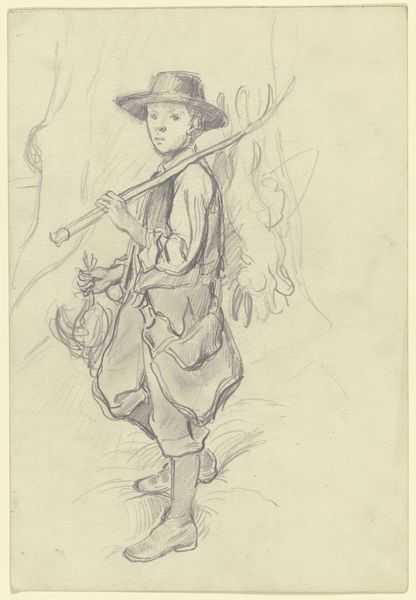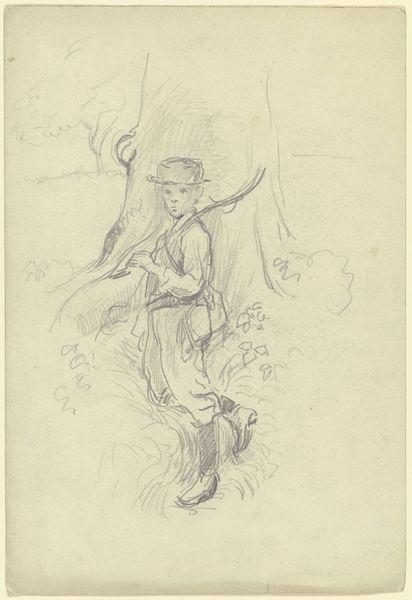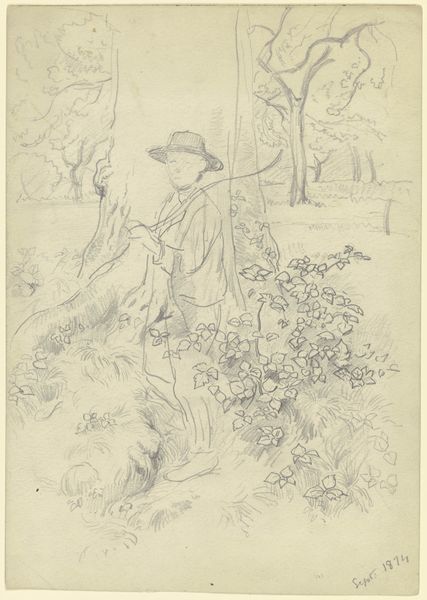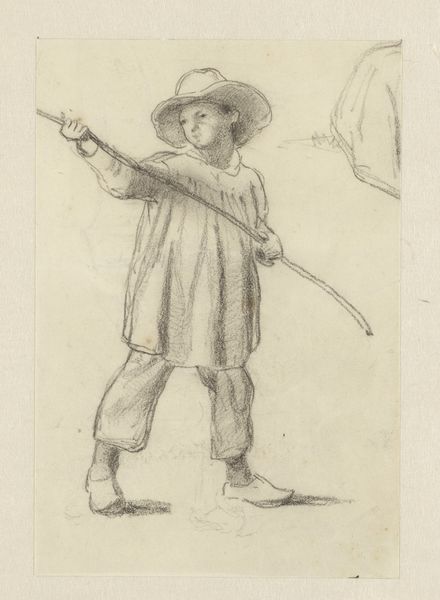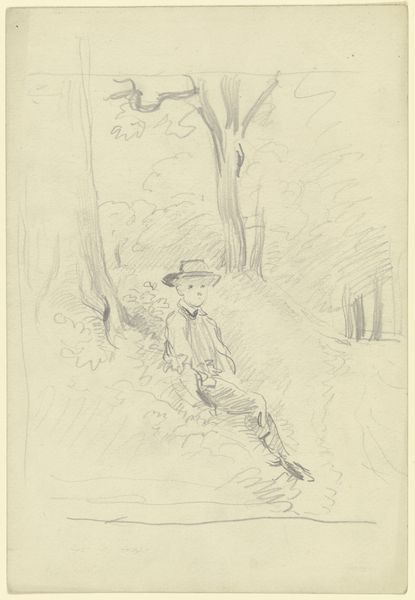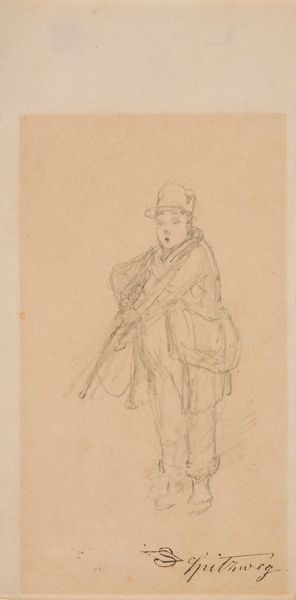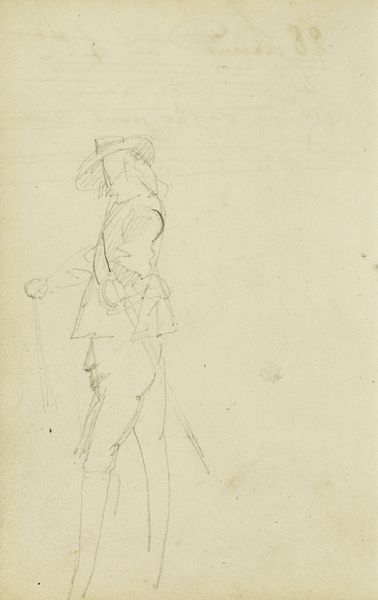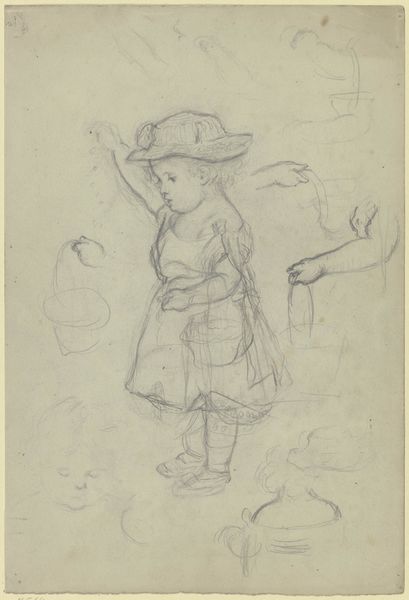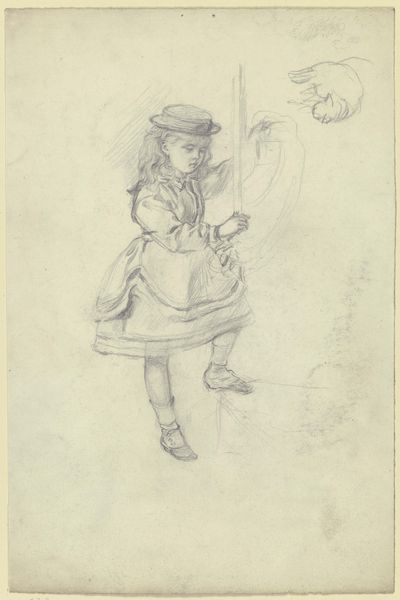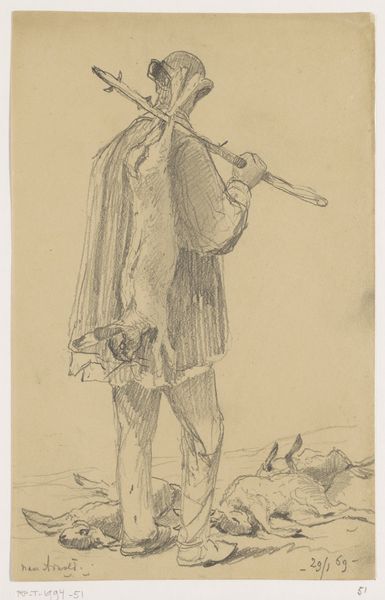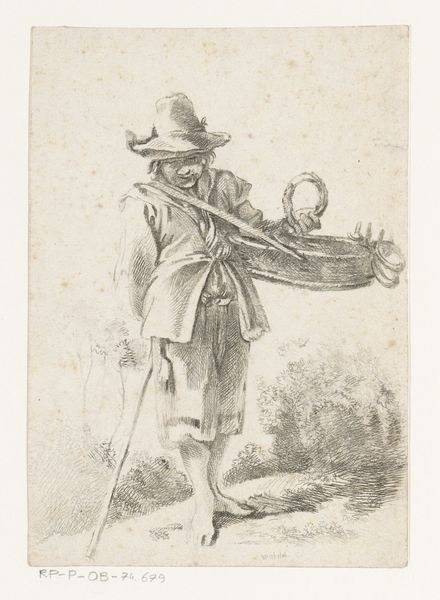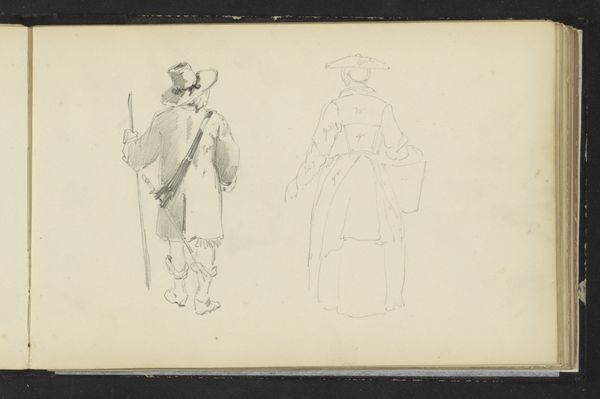
drawing, paper, pencil
#
portrait
#
drawing
#
16_19th-century
#
landscape
#
paper
#
pencil
Copyright: Public Domain
Otto Scholderer sketched ‘The Young Gamekeeper’ in pencil sometime during the mid-19th century. Scholderer lived through the tumultuous period of German unification. This drawing provides insight into the identities and roles that were emerging. Here we see a boy, rendered with a gentle hand, equipped for the hunt. The term “gamekeeper” itself speaks to a complex relationship between humanity and nature, where the wild is managed and controlled. This suggests privilege, a class structure where access to nature and its resources is determined by social standing. The boy's youth adds another layer. Is this an initiation into manhood, a passing down of tradition? Or does it critique the loss of innocence, a young person burdened with the responsibilities of maintaining a social order? 'The Young Gamekeeper' isn't just a portrait, it's a snapshot of a society grappling with its relationship to land, labor, and the very concept of belonging. It reflects the tensions between tradition and modernity, individual freedom and social obligation.
Comments
No comments
Be the first to comment and join the conversation on the ultimate creative platform.
